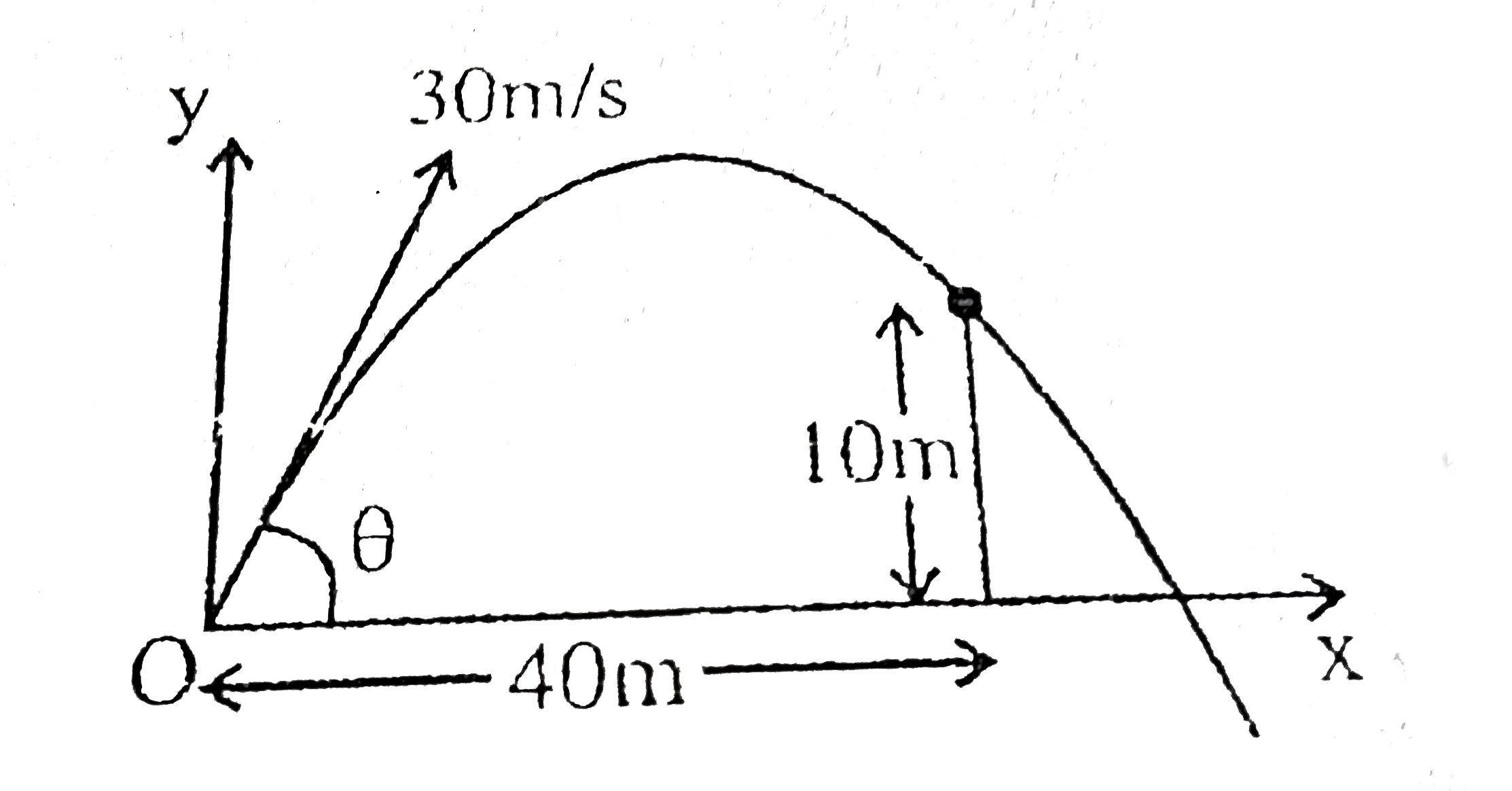A particle is projected from a point A vertically upwards with a speed of 50ms−1 and another is dropped simultaneously from B which is 200 m vertically above A. They cross each other after [Given: g=10ms−2].
8 s
6 s
4 s
5 s
The correct Answer is:B
To solve the problem, we need to analyze the motion of both particles. Let's break it down step by step.
Step 1: Define the motion of the first particle (A)
The first particle is projected upwards from point A with an initial velocity uA=50m/s. The distance traveled by this particle after time t can be given by the equation of motion:
S1=uAt−12gt2
Substituting the values:
S1=50t−12×10×t2=50t−5t2
Step 2: Define the motion of the second particle (B)
The second particle is dropped from point B, which is 200 m above point A. Since it is dropped, its initial velocity uB=0. The distance traveled by this particle after time t is given by:
S2=12gt2
Substituting the values:
S2=12×10×t2=5t2
Step 3: Set up the equation for the total distance
When the two particles cross each other, the sum of the distances they have traveled will equal the initial distance between them, which is 200 m. Therefore, we can write:
S1+S2=200
Substituting the expressions for S1 and S2:
(50t−5t2)+(5t2)=200
This simplifies to:
50t=200
Step 4: Solve for time t
Now, we can solve for t:
t=20050=4s
Conclusion
The two particles cross each other after 4 seconds.
---
The first particle is projected upwards from point A with an initial velocity uA=50m/s. The distance traveled by this particle after time t can be given by the equation of motion:
S1=uAt−12gt2
Substituting the values:
S1=50t−12×10×t2=50t−5t2
The second particle is dropped from point B, which is 200 m above point A. Since it is dropped, its initial velocity uB=0. The distance traveled by this particle after time t is given by:
S2=12gt2
Substituting the values:
S2=12×10×t2=5t2
When the two particles cross each other, the sum of the distances they have traveled will equal the initial distance between them, which is 200 m. Therefore, we can write:
S1+S2=200
Substituting the expressions for S1 and S2:
(50t−5t2)+(5t2)=200
This simplifies to:
50t=200
Now, we can solve for t:
t=20050=4s
The two particles cross each other after 4 seconds.
Similar Questions
A ball is thrown vertically upward with speed 40m/s. Simultaneously, another ball is dropped from a height 200m in the same verticle line. When and where the balls meet?
View SolutionA body is projected vertically up with a speed of 20ms−1 .The distance travelled by it in "3" seconds it (g=10ms−2)
View Solution
Knowledge Check
- Question 1 - Select One
A particle is projected from a point A verically upwards with a speed of 50ms−1 and another is dropped simulataneously from B which is 200 m veritically above A. They cross each other after [Given: g=10ms−2].
A8 sB6 sC4 sD5 s - Question 2 - Select One
A particle of mass 100 g is thrown vertically upwards with a speed of 5ms−1. The work done by the force of gravity during the time the particle goes up is
A−0.5JB−1.25JC1.25JD0.5J - Question 3 - Select One or More
A particle is projected vertically upward with velocity u from a point A, when it returns to the point of projection .
AIts average speed is u/2.BIts average velocity is zero.CIts displacement is zero.DIts average speed is u.
From a point A,80m above the ground, a particle is projected vertically upwards with a velocity of 29.4.ms−1, Five seconds later, another particle is dropped from a point B,34.3m vertically below A Derermine when and where one voertakes the other. Take g=9.8ms−2.
View SolutionA particle is projected from a point O with an initial speed of 30ms−1 to pass through a point which is 40m from O horizontally and 10m above O. There are two angles of projection for which this is possible. These angles are α and β. The value of |tan(α+β)| is
 View Solution
View SolutionA body is vertically projected at 100 ms−1. It returns after (g=10ms−2)
View SolutionA ball is dropped from top of a tower 250 m high. At the same time, another ball is thrown upwards with a velocity of 50ms−1 from the ground. The time at which they cross each other is
View SolutionThere are two identical particles A and B. One is projected vertically upward with speed √2gh from ground and other is dropped from height h along the same vertical line. Collision between them is perfectly inelastic. Find time taken by them to reach the ground after collision in terms of √hg.
View Solution

